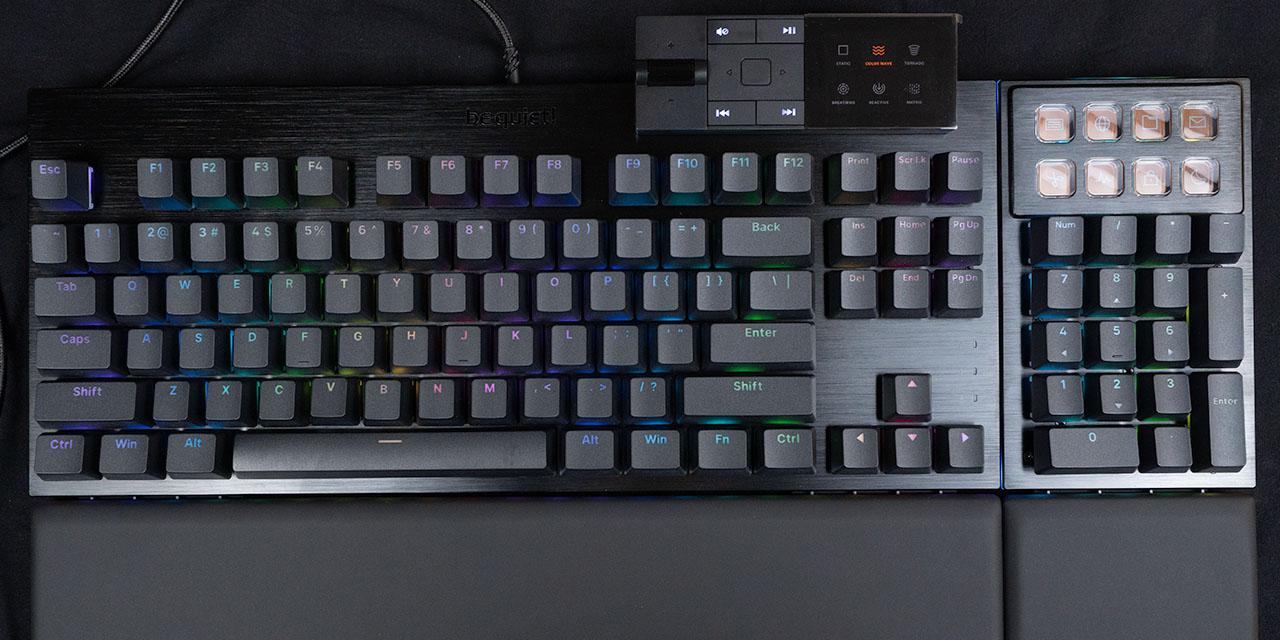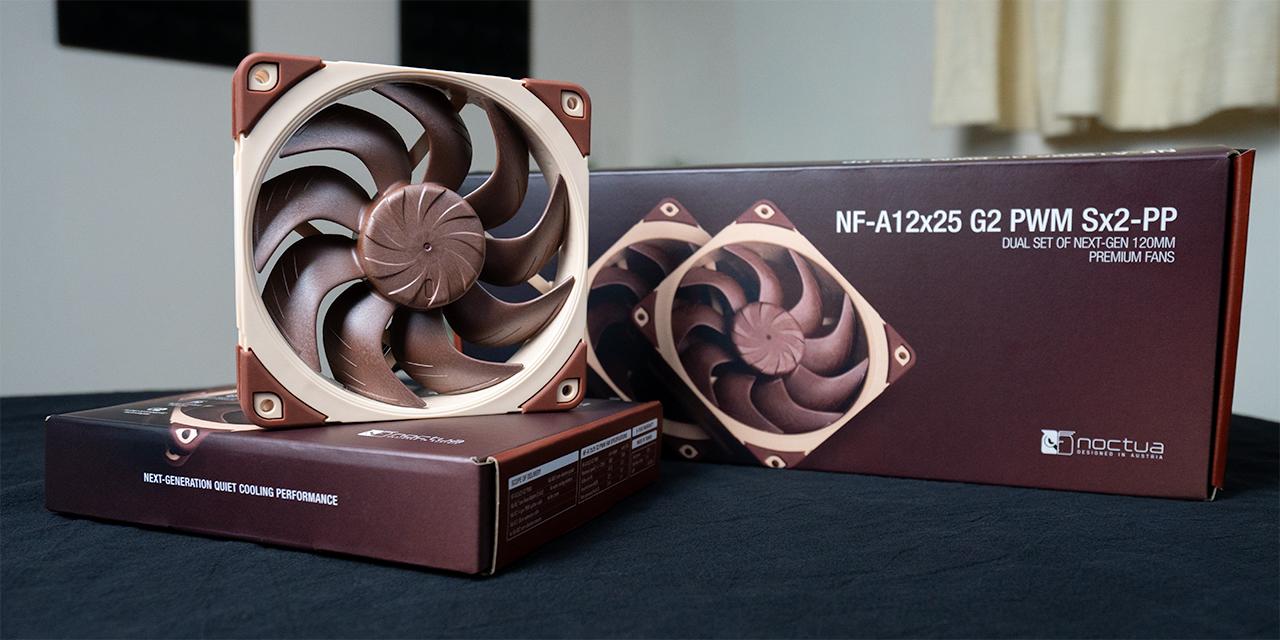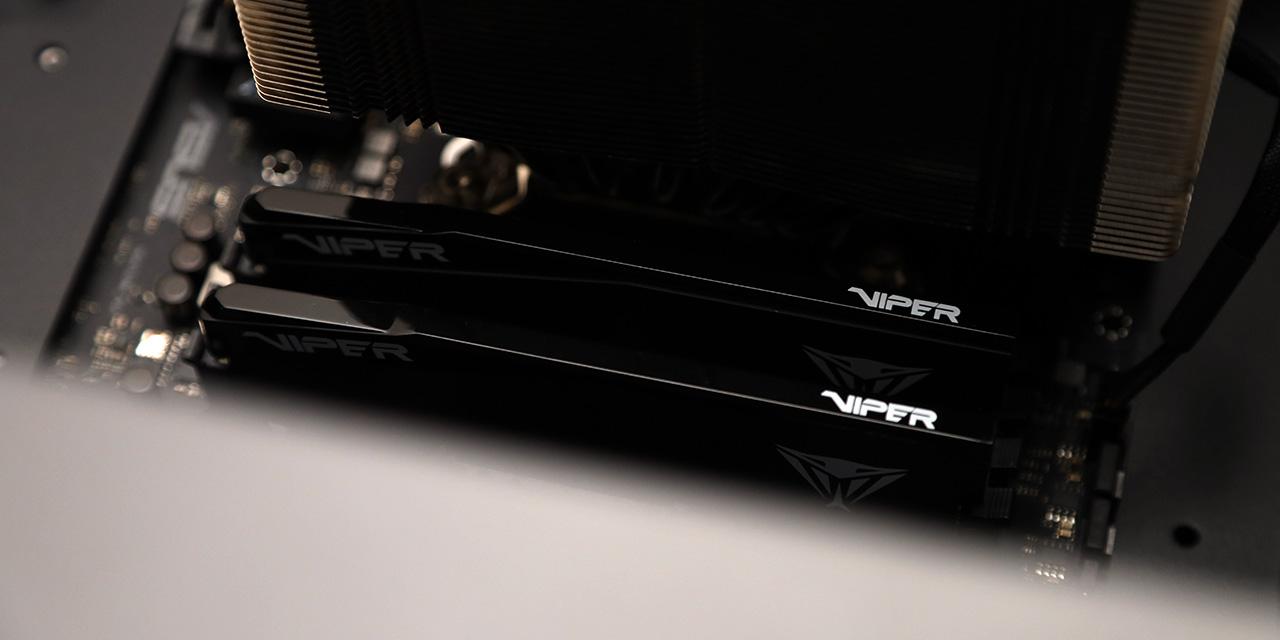Page 2 - A Closer Look, Test System

Like most memory modules, the Thermaltake TOUGHRAM XG RGB DDR4-4000 2x8GB comes equipped with a set of medium-profile heatspreaders. The aluminum found on both sides is light and makes for a decent heat conductor. The TOUGHRAM XG RGB is roughly 2cm taller than modules with no heatspreaders at all. With the heatspreaders, the height of the entire module itself is still reasonable, measuring around 4.75cm. Fitting a CPU cooler over top of the RAM modules should not be an issue if you keep in mind the size and design of the heatsink on the cooler you wish to install. Aside from looking good, the heatspreaders serve an important role in dissipating heat generated by the memory modules. Since integrated memory controllers exist on Intel and AMD CPUs, the memory modules are limited in what you can do with the voltage. Because of this, removing the heatspreaders will not mean they will suddenly overheat. Either way, why you would remove something that provides so much style?
The design of the heatspreaders is unlike other memory kits reviewed in the past. The heatspreaders are asymmetrical when viewed from the front, but symmetrical between sides. The metallic grey and straight black color scheme on the aluminum is creative, giving the TOUGHRAM XG RGB a unique aesthetic. This is further complemented by the chrome stripe in the middle, which I think adds a clean visual touch. The Thermaltake logo and brand name are located on the top right edges, although only for one side. The other side contains a specification label listing the model number, bandwidth, latencies, rated voltage, and memory capacity. The TOUGHRAM XG RGB was manufactured in Taiwan.

Using a bit of heat and a small nylon pry bar to remove the heatspreaders, we can take a closer look at the memory module itself. Here, we can see the Thermaltake TOUGHRAM XG RGB DDR4-4000 2x8GB has a clean black printed circuit board. The LEDs can be seen on the PCB itself and, as the retail box displays, are controllable by the lighting software on all the popular motherboards along with the various available Thermaltake lighting programs. The heatspreader pieces are each attached to the memory module by strips of thermally conductive adhesive and are manually aligned rather than being physically locked together.
Unlike many memory modules, the heatspreaders on the Thermaltake TOUGHRAM XG RGB DDR4-4000 2x8GB are not mirror images due to the different color schemes on each aluminum piece. The heatspreaders are placed on the module in a crisscross manner with one aluminum piece being placed on top of the other by aligning the notches at the top. The aluminum does not hold a lot of heat and thus, dissipates the heat energy into the surrounding environment. The aluminum looks very thin, but worry not -- they feel quite firm and should not easily bend. With the RGB LED lighting being one of the primary selling points of the Thermaltake TOUGHRAM XG RGB, there is really no reason you would need to remove the heatspreaders. If the scenario arises where these RAM modules will not clear your heatsink, which is basically non-existent nowadays, it would be better to just find another modern heatsink to use.

Taking a closer look at the integrated circuit chips, we can read the code "DTDRHA27WZ2". While it is not immediately clear, I was able to eventually find out these are SK Hynix-manufactured chips identified as H5AN8G8NDJR-VKC, with eight 1GB chips on a single side. This adds up to a total of 8GB on each DIMM for each RAM module. As mentioned on the previous page, these memory modules are programmed to run at a high frequency of DDR4-4000 with 19-23-23-42 latencies. The performance will be covered very soon, which will allow us to see how these latencies affect the Thermaltake TOUGHRAM XG RGB DDR4-4000 2x8GB when compared to other memory module sets. The stock voltage of the TOUGHRAM XG RGB is 1.35V, which is the maximum Intel and AMD safe limit. While this specific kit runs at an operating frequency of 4000MHz, the TOUGHRAM XG RGB is also available at frequencies of 3600MHz, 4400MHz, and 4600MHz. The specifications for this specific IC chip are listed below from the datasheet found on SK Hynix's website:
• VDD=VDDQ=1.2V +/- 0.06V
• Fully differential clock inputs (CK, CK) operation
• Differential Data Strobe (DQS, DQS)
• On chip DLL align DQ, DQS and DQS transition with CK transition
• DM masks write data-in at the both rising and falling edges of the data strobe
• All addresses and control inputs except data, data strobes and data masks latched on the rising edges of the clock
• Programmable CAS latency 9, 10, 11, 12, 13, 14, 15, 16, 17, 18, 19 and 20 supported
• Programmable additive latency 0, CL-1, and CL-2 supported (x4/x8 only)
• Programmable CAS Write latency (CWL) = 9, 10, 11, 12, 14, 16, 18
• Programmable burst length 4/8 with both nibble sequential and interleave mode
• BL switch on the fly
• 16banks
• Average Refresh Cycle (Tcase of 0 oC~ 95 oC)
- 7.8 µs at 0oC ~ 85 oC
- 3.9 µs at 85oC ~ 95 oC
• JEDEC standard 78ball FBGA(x4/x8), 78ball FBGA(x16)
• Driver strength selected by MRS
• Dynamic On Die Termination supported
• Two Termination States such as RTT_PARK and RTT_NOM switchable by ODT pin
• Asynchronous RESET pin supported
• ZQ calibration supported
• TDQS (Termination Data Strobe) supported (x8 only)
• Write Levelization supported
• 8 bit pre-fetch
• This product in compliance with the RoHS directive.
• Internal Vref DQ level generation is available
• Write CRC is supported at all speed grades
• Maximum Power Saving Mode is supported
• TCAR(Temperature Controlled Auto Refresh) mode is supported
• LP ASR(Low Power Auto Self Refresh) mode is supported
• Fine Granularity Refresh is supported
• Per DRAM Addressability is supported
• Geardown Mode(1/2 rate, 1/4 rate) is supported
• Programable Preamble for read and write is supported
• Self Refresh Abort is supported
• CA parity (Command/Address Parity) mode is supported
• Bank Grouping is applied, and CAS to CAS latency (tCCD_L, tCCD_S) for the banks in the same or different bank group accesses are available
• DBI(Data Bus Inversion) is supported(x8)

The TOUGHRAM software is a unique program that can be downloaded from Thermaltake's website along with all the other Thermaltake lighting programs. This software allows users to customize the RGB lighting and monitor specific parameters on their TOUGHRAM modules. Four tabs are available for users -- Information, Lighting, Notifications, and Settings. The Information tab allows users to monitor the temperature of the memory modules along with providing information on the frequency, CAS latency, and amount of memory currently being used. As the name suggests, the Lighting tab is for RGB lighting customization to really bring out the beautiful lighting of the TOUGHRAM XG RGB. Users have access to 28 different lighting modes along with four different adjustable light speeds. Up to five different lighting profiles can be set in this section. The Notifications tab lets users choose a temperature setpoint for their memory modules and CPU. Users have the option to have their PC provide a shutdown prompt if the RAM or CPU temperature surpasses the chosen setpoint. Additionally, users can set all fans to reach full speed if the CPU temperature rises above the manual setpoint. Finally, the Settings tab is a simple menu providing the software version along with an option to change the language, have auto-updates running, and to minimize at system startup.

Our test configuration is as follows;
CPU: AMD Ryzen 5 3600 @ 3.6GHz
CPU Cooling: AMD Wraith Stealth Stock Cooler
Motherboard: MSI MAG B550 Tomahawk
Graphics: NVIDIA GeForce RTX 2060
Chassis: Fractal Design Focus G
Storage: Western Digital Blue SN550 NVMe SSD 1TB, Samsung 970 EVO 1TB
Power: Corsair CX650M 650W
Operating System: Microsoft Windows 10 Pro
Compared Hardware:
- Thermaltake TOUGHRAM XG RGB 2x8GB @DDR4-4000 19-23-23-42
- G.Skill TridentZ RGB DDR4-3600 2x8GB @ DDR4-3600 18-22-22-42
- XPG Spectrix D50 DDR4-3600 2x8GB/a> @ DDR4-3600 18-20-20-42<
Page Index
1. Introduction, Packaging, Specifications
2. A Closer Look, Test System
3. Benchmark: AIDA64 CPU
4. Benchmark: AIDA64 FPU
5. Benchmark: AIDA64 Memory
6. Benchmark: PCMark 10
7. Benchmark: 3DMark
8. Benchmark: PassMark PerformanceTest 10
9. Benchmark: SuperPI 1M, Cinebench R20
10. Overclocking and Conclusion





